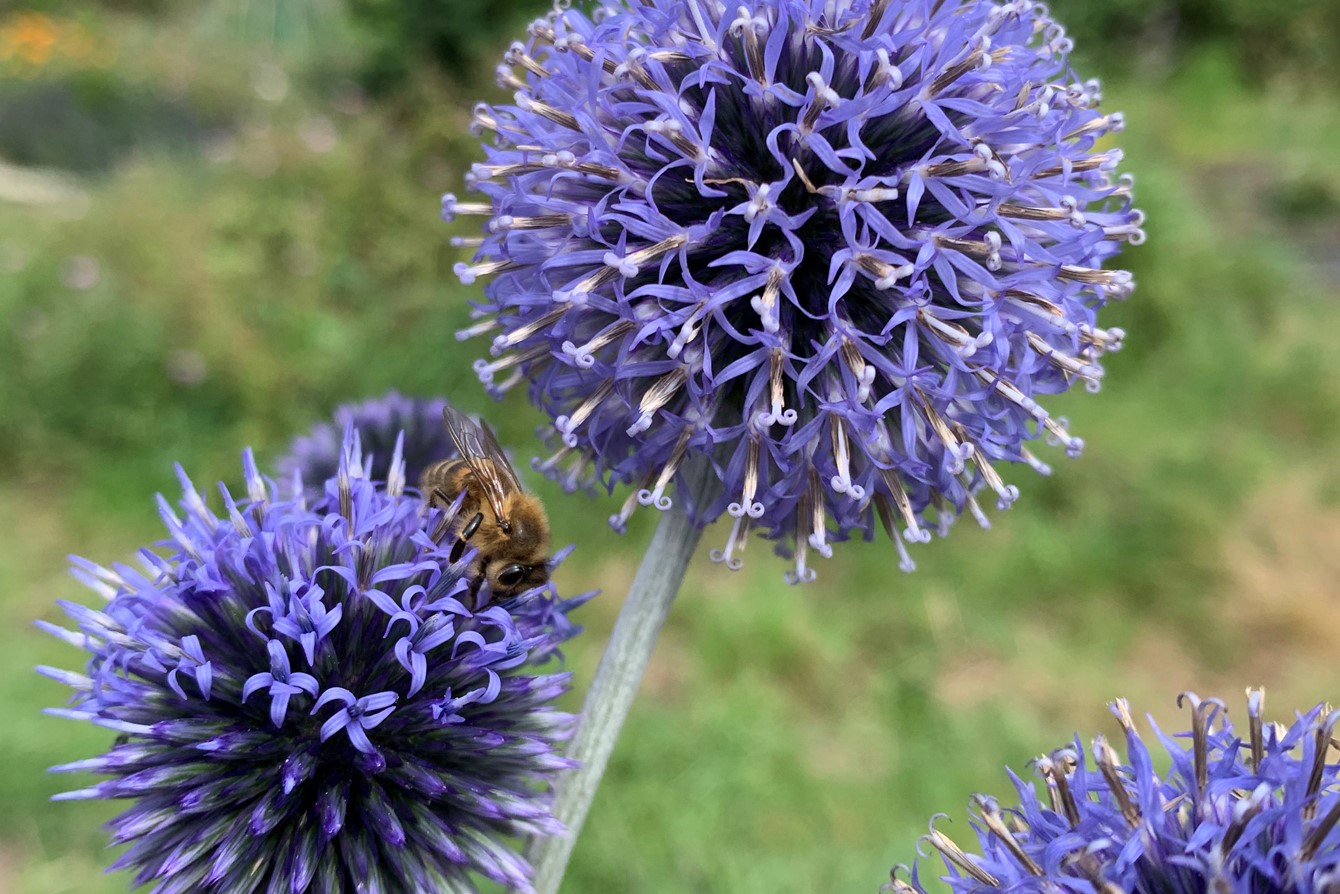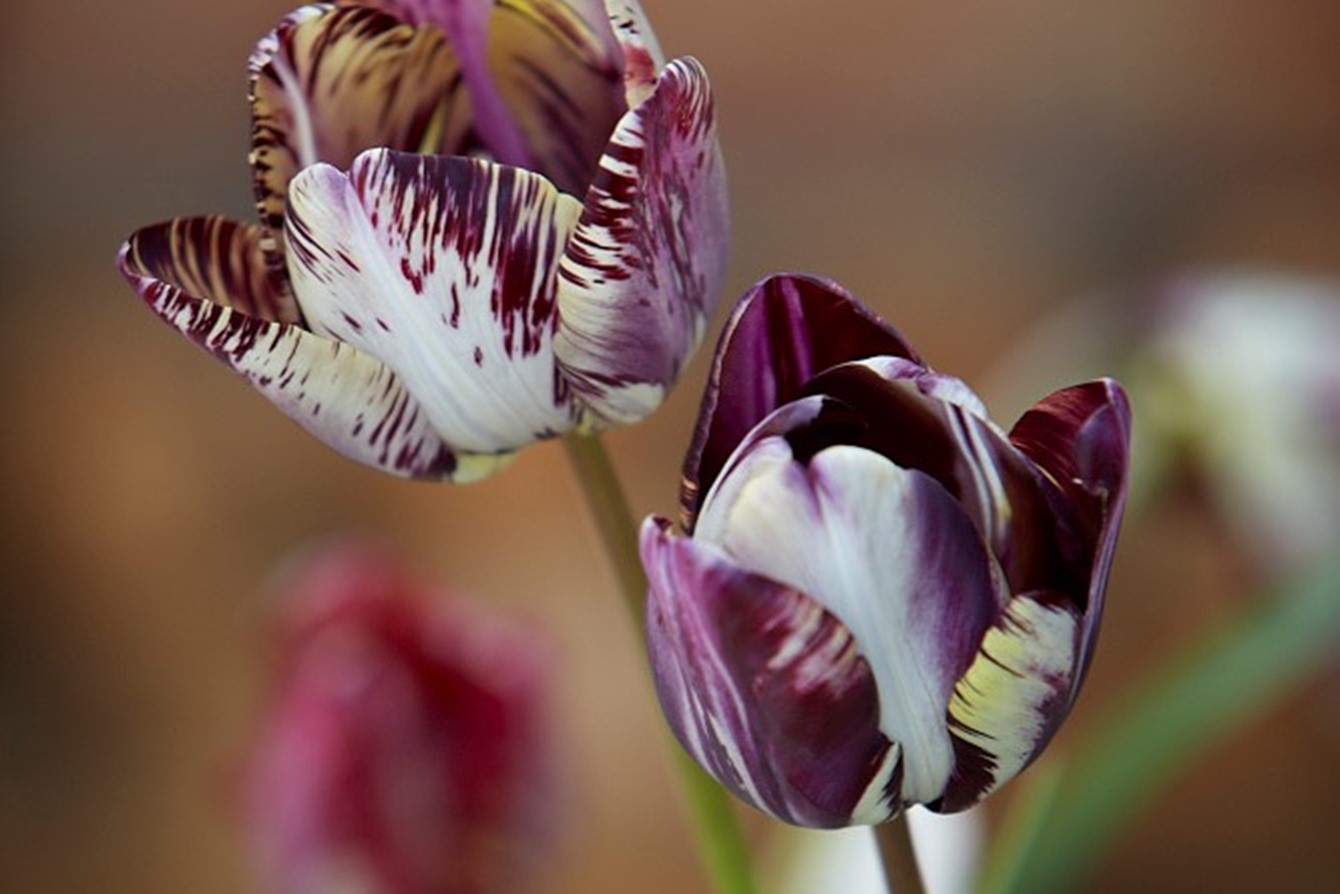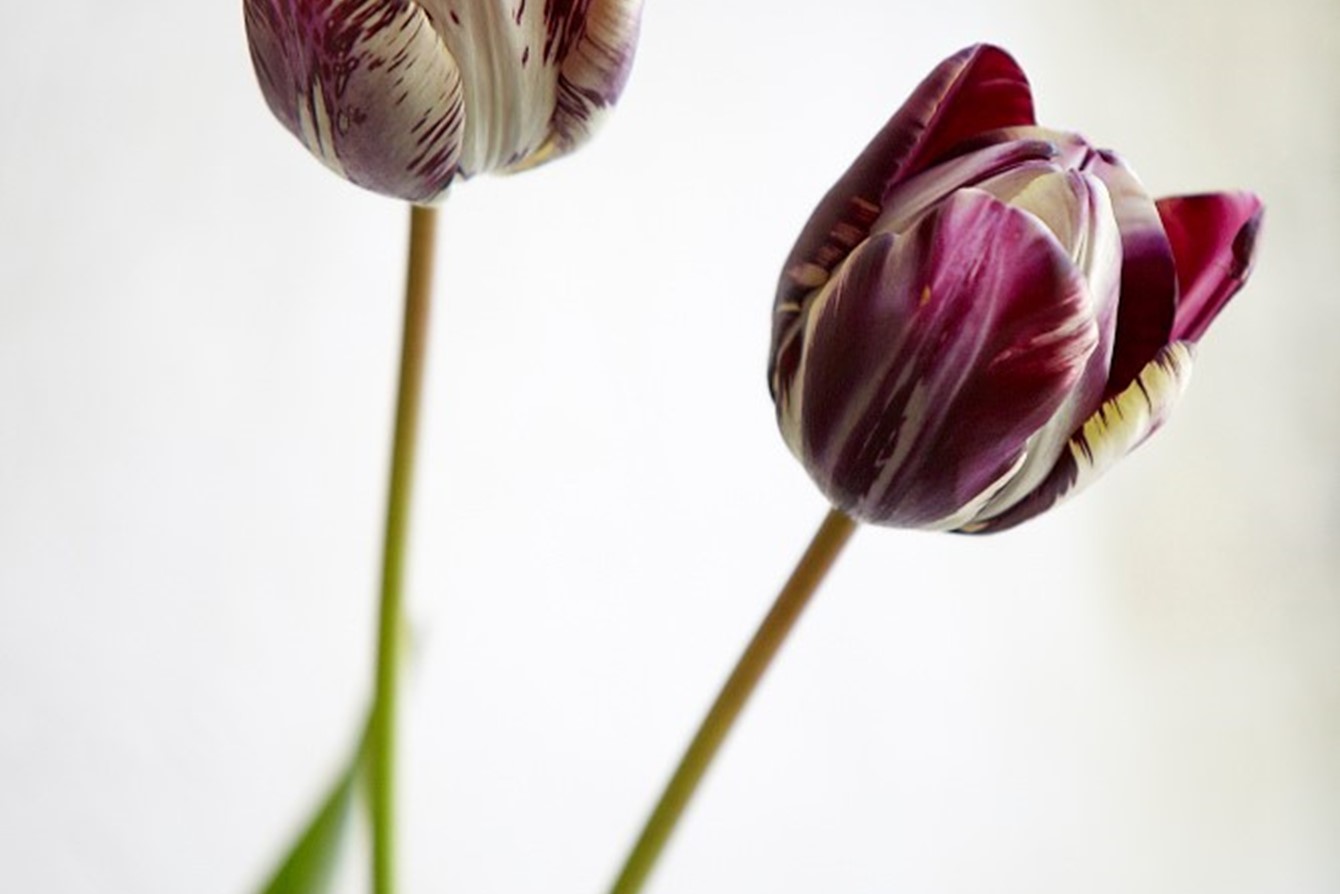Allotments take centre stage for thriving new National Plant Collections
11th November, 2021
These thriving collections prove you don’t need a garden to hold a National Plant Collection
This autumn, Britain’s allotments are taking centre stage as five new National Plant Collections, held all, or partly on allotments in Warwickshire and Kent, have been accredited by horticultural conservation charity Plant Heritage.
Plant Heritage has also accredited four other new collections, including two historic collections - Iris in Suffolk and Tulipa in Wiltshire, and new collections of Tradescantia and Verbena, which were both inspired by the charity’s annual Missing Genera campaign.
Abundant allotments showcasing Plant Heritage National Plant Collections
Nestled between a variety of fruit and veg plots, Andrew Gladman from Binswood Allotment Society in Warwickshire holds collections of Kniphofia and Echinops on his allotment in Leamington Spa.
This Kniphofia (red hot poker) collection is the result of Andrew’s passion for these plants, and has been granted National Plant Collection status due to its size - the allotment is home to 149 different types of these eye-catching and iconic plants. Andrew was shocked to learn of the decline in Kniphofia over the years and that those available now are just a fraction of the 1,000 cultivars ever bred and named. In order to conserve the diversity of Kniphofia, this expanding collection aims to spread the word that Kniphofia are at risk and to see more planted in gardens across the country.


A favourite for visiting bees with their densely clustered flowerheads, Andrew has always grown some Echinops (globe thistles) on his allotment. But, it wasn’t until realising they were at risk of being lost from cultivation that he decided to expand his collection. Following extensive research and finding that almost all Echinops could be reproduced from seed, Andrew now grows 11 species and 12 cultivars of Echinops on his allotment. Like the Kniphofia, one bed holds the majority of Echinops taxa and the second is planted as mixed herbaceous beds with some Echinops within.
Travel to the Garden of England and you’ll find more allotments that are home to Collections. Sevenoaks based Julian Reed has been collecting ferns since the 1970s, and this newly accredited collection of Polystichum, or shield ferns is held over two sites – his allotment and garden. Julian has amassed a vast collection of Polystichum, and it is still expanding, including many old and unusual forms and non commercial varieties.
Also in Kent are Adrian Thorne's newly accredited Actaea and Veronica (Parahebe) collections - held partly in his own garden, but with all of his collection’s back-up plants held on his allotment. Adrian’s Veronica (Parahebe) collection was born out of his passion for Parahebe, now classified under Veronica. With its six species and 21 taxa it is now the largest of its kind in the UK, and upon discovering that some varieties are difficult to cultivate, Adrian is now on a mission to explore optimum growing conditions for this pretty plant.
Vicki Cooke, Conservation Manager at Plant Heritage says: “There are a handful of National Plant Collections held on allotments across the country, but as they’re not the obvious location choice for a collection they’re often overlooked. These five new collections reinforce that you don’t need a garden or large plot of land to hold a National Plant Collection, and that a variety of plants from iconic red hot pokers to understated ferns can thrive on allotments. We hope this encourages more people to start thinking of places that they could hold a National Plant Collection, whether on an allotment, a community garden or a school.”
Hailing historic plants in Wiltshire & Suffolk
Polly Nicholson’s historic collection of Tulipa is full of rare and unusual English and Dutch tulips (including breeder and broken tulips), with some dating from the early 1600s. Based in Wiltshire, this collection has organic status from the Soil Association and is conserving many bulbs that are in increasingly short supply. Polly hopes that her living resource of heritage tulips will enlighten and educate visitors about these fascinating plants.
Irises form part of Suffolk’s horticultural history and Steve Baker’s new Iris collection preserves a number of rare historic varieties from Suffolk breeders. Two irises have their own historic significance, as both are early winners of the British Iris Society’s Dykes Medal. Another, ‘Golden Hind’ (Chadburn), was important in the development of yellow irises and created several hybrids in the UK. Others, originally raised by B R Long, can also be found in Steve’s collection. Steve aims to find more irises by Chadburn and Long, and in doing so hopes to maintain Suffolk’s longstanding connection with irises.
Vicki adds: “These two collections were accredited as they’re helping to preserve significant and historic plants to ensure they’re not lost from our gardens - something that echoes the ethos of Plant Heritage.”



